Big picture:
Every acid-base reaction is a competition for a proton.
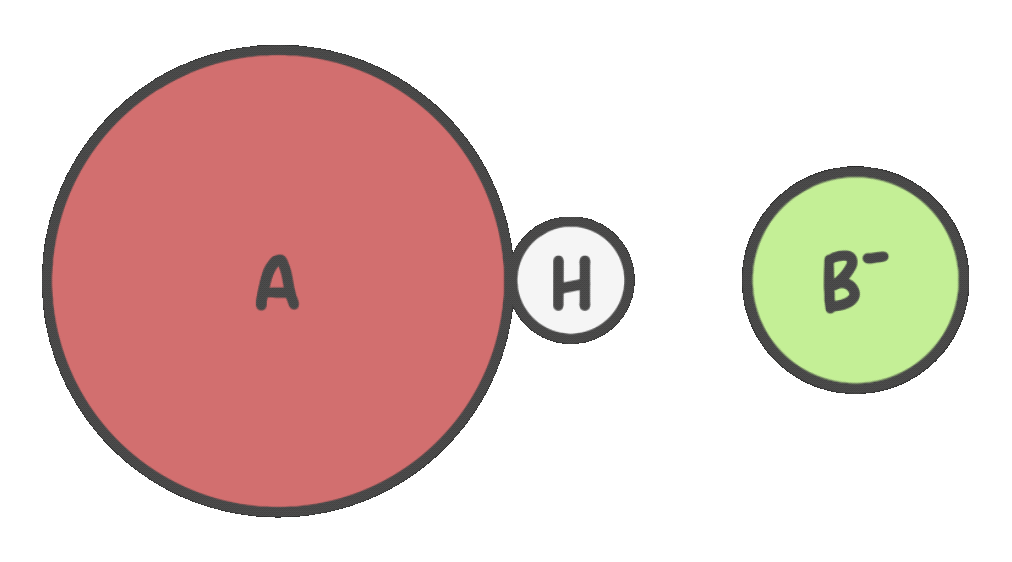
HA + B– ⇌ A–+ HB
The direction of equilibrium depends on which side has the more stable conjugate base, either A– or B–.
Remember when we ranked acids by evaluating the stability of their conjugate bases using Charge, Atom, Resonance, Induction, and Orbitals?
We’ll be applying those same principles here.
Not familiar with these concepts yet? We recommend checking out our guide to ranking acids by strength before diving in.
Our goal is simple: figure out which base is more stable, so we can predict which direction the reaction will favor—with confidence.
Step 1: Identify the base on either side of the equilibrium
💡Quick Tip:
Bases in Brønsted-Lowry acid-base reactions typically carry a negative charge, which helps you quickly spot them.
Look at the equation and identify the bases on both sides:
HA + B– ⇌ A–+ HB
- The base (usually B–) is the species that accepts the proton.
- The conjugate base (usually A–) is what remains after the acid donates a proton.
Step 2: Compare the stability of these bases
Now ask: Which base is more stable?
To evaluate stability, we’ll consider all four factors in this order (Atom, Resonance, Induction, Orbitals)
1️⃣ Atom:
Negative charges are more stable on more electronegative atoms (across a period)
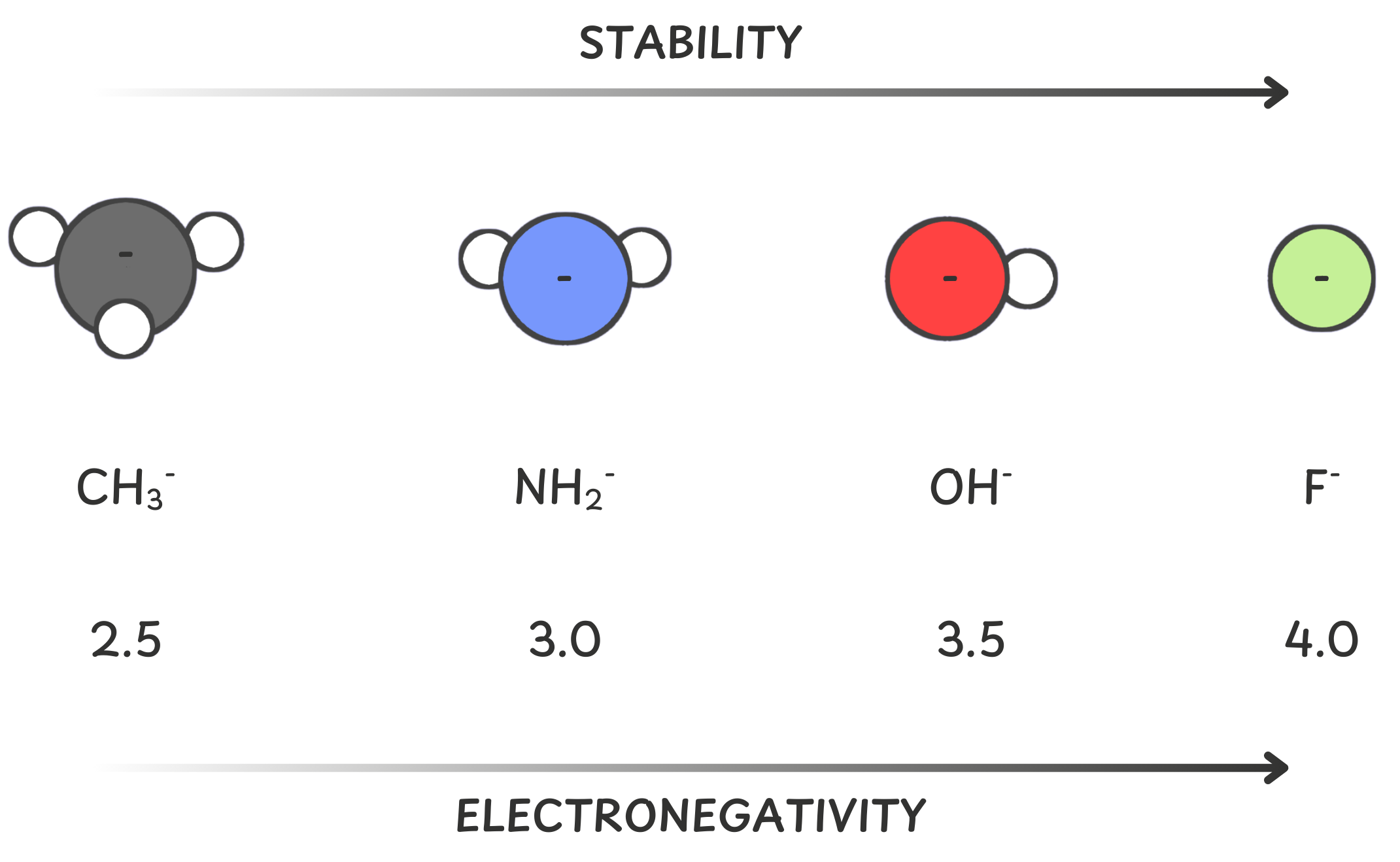
and larger atoms (down a group).
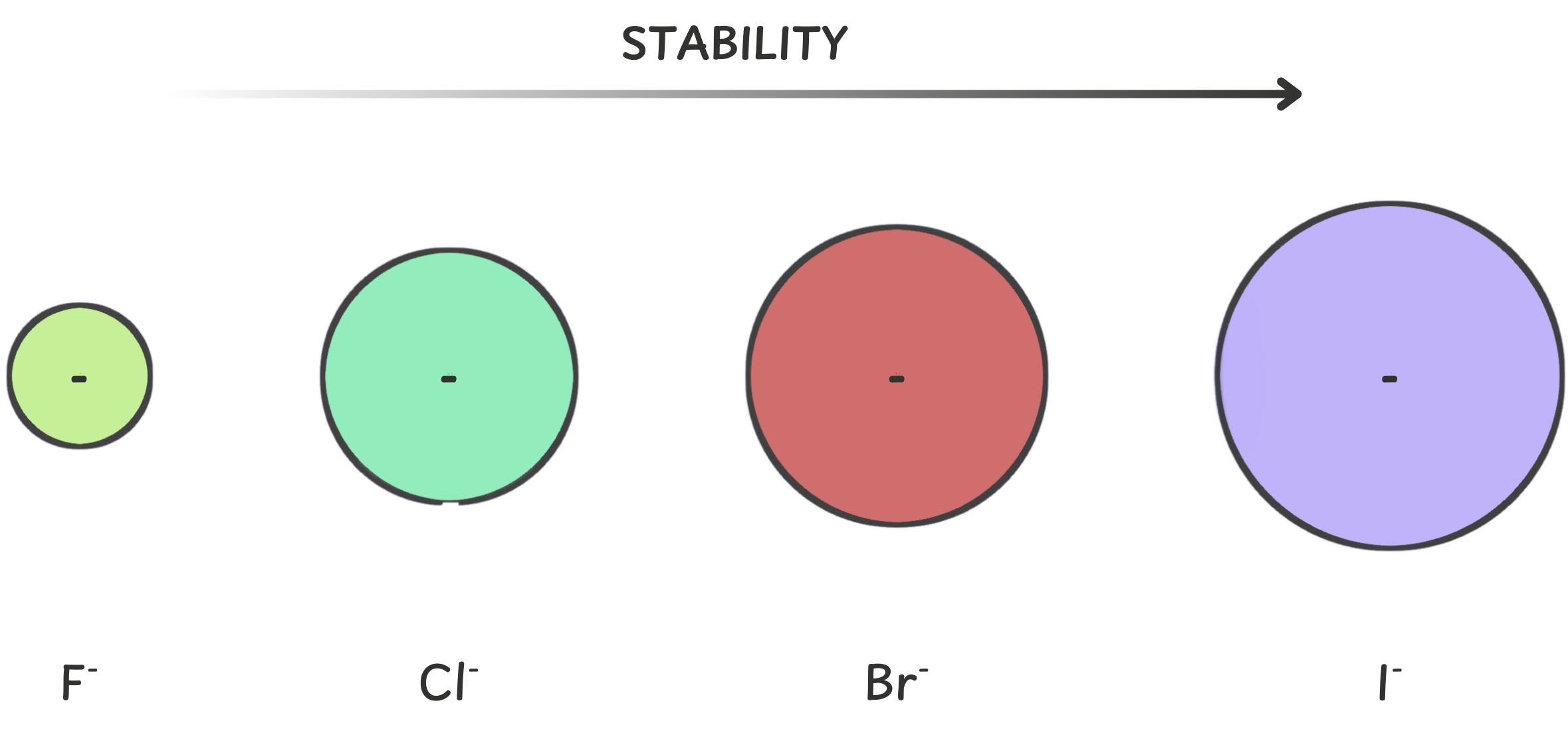
2️⃣ Resonance:
Can the negative charge be delocalized through resonance? If so, resonance dramatically increases stability.
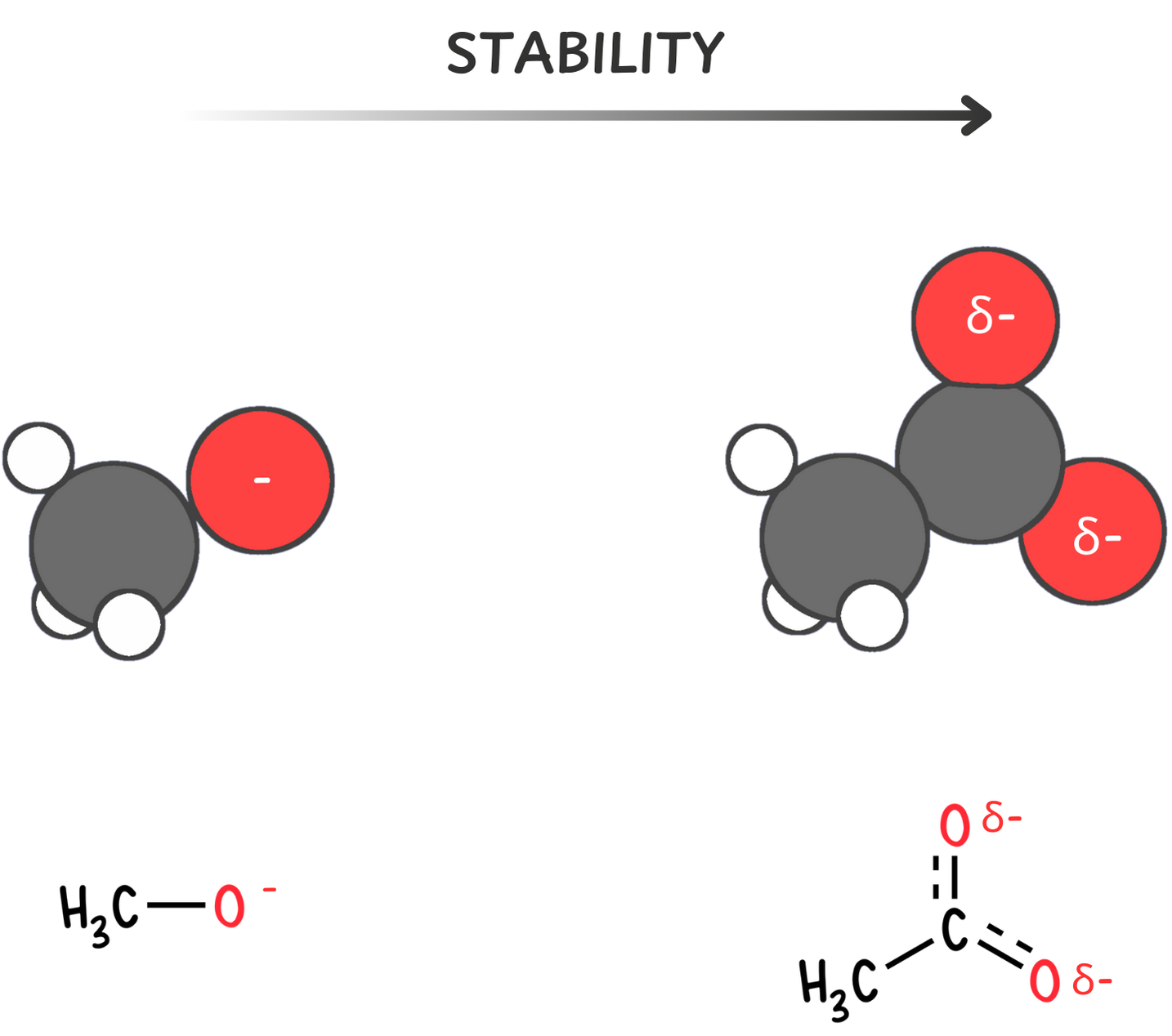
3️⃣ Induction:
Nearby electronegative atoms or electron-withdrawing groups help stabilize the negative charge through inductive effects.
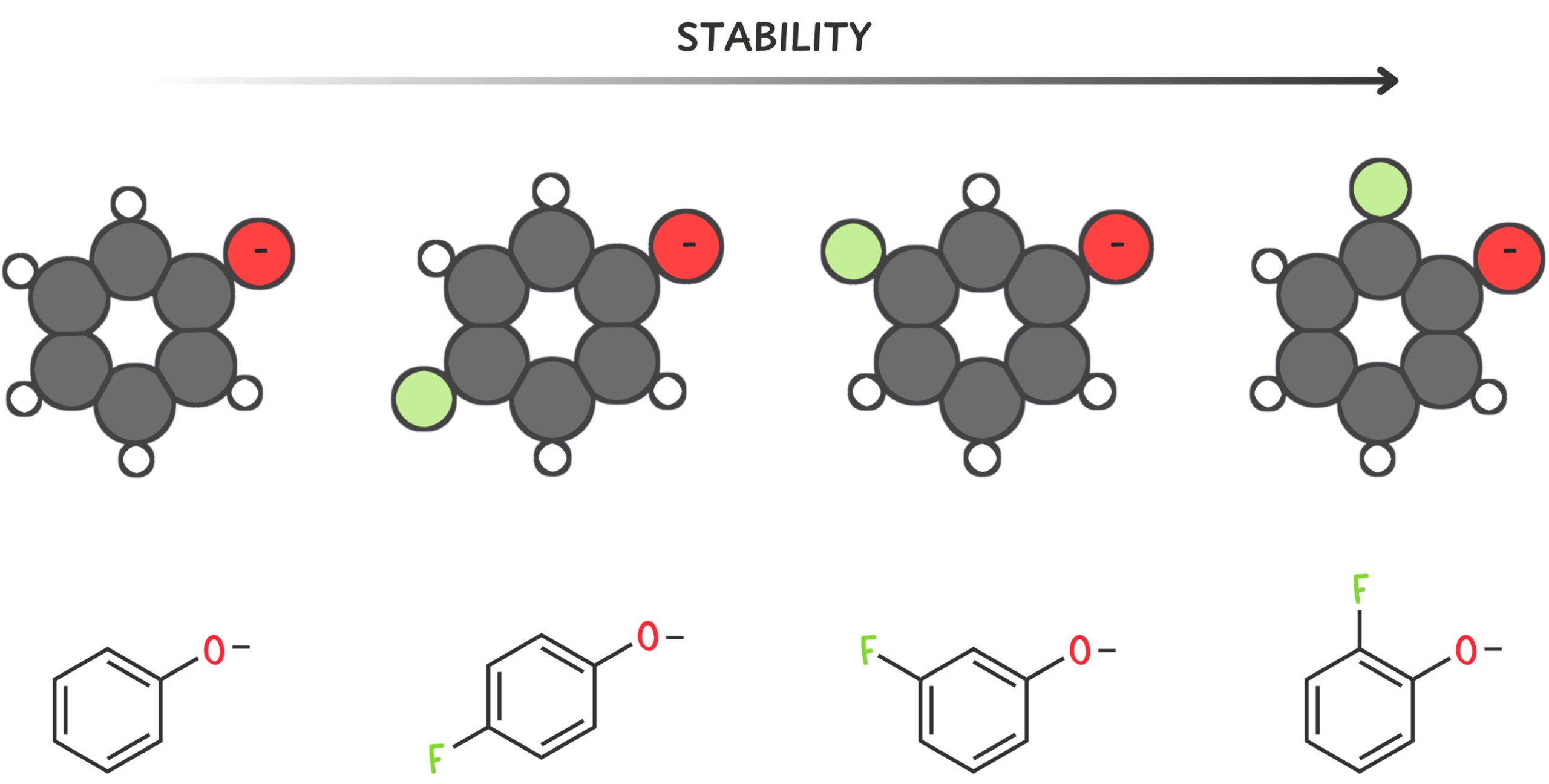
4️⃣ Orbitals:
A negative charge is more stable in orbitals with higher s-character, so sp > sp² > sp³.
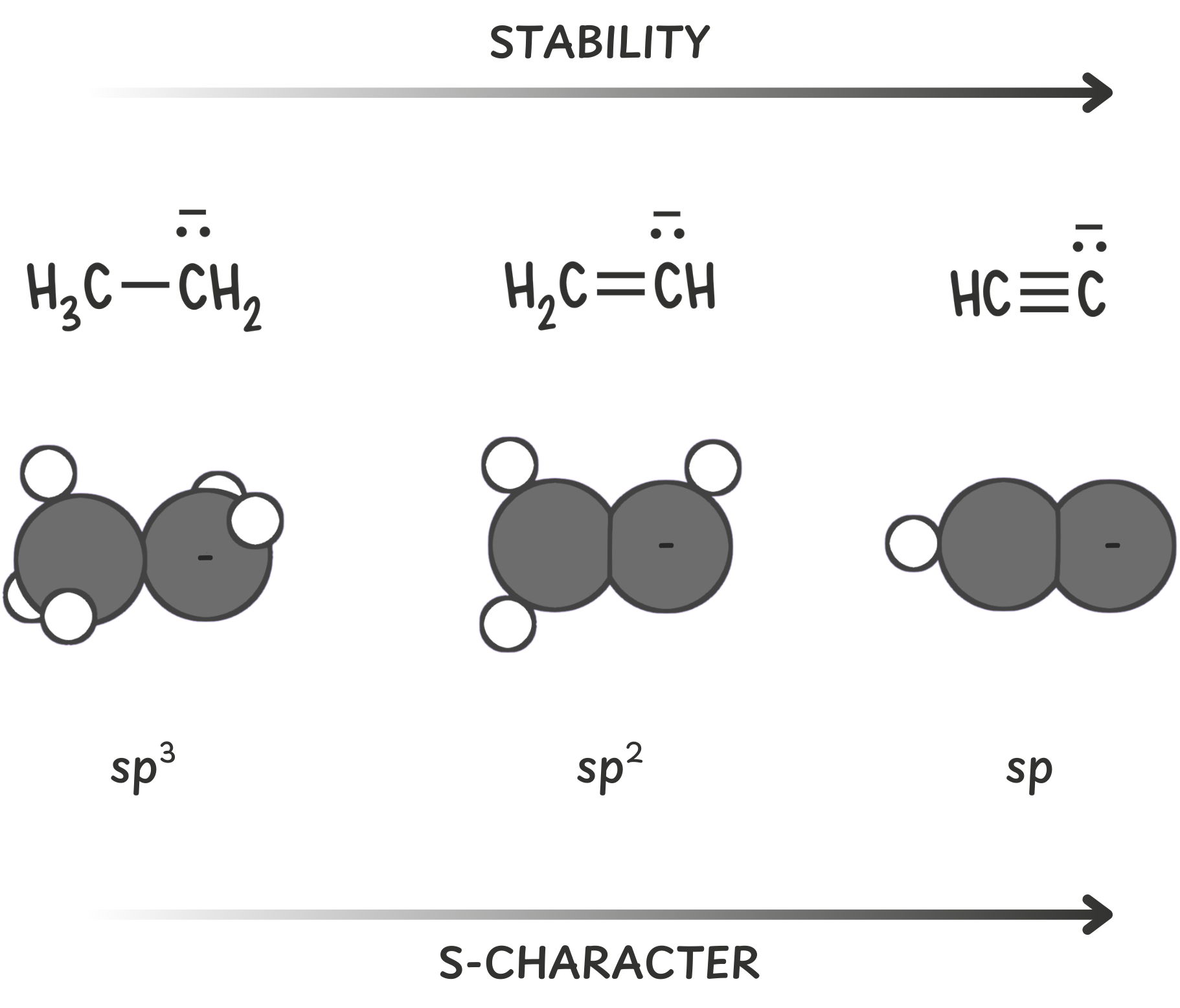
Take your time comparing both bases through this lens. The one that checks off more boxes is generally the more stable conjugate base, and that’s the side equilibrium will favor.
Step 3: Equilibrium will favor the more stable base
Equilibrium favors the side with the more stable base.
- If the more stable base is on the product side (A–) → equilibrium favors the products.
- If the more stable base is on the reactant side (B–) → equilibrium favors the reactants.
And that’s it! By comparing base stability, you can predict the direction the reaction favors, even without relying on pKa values.